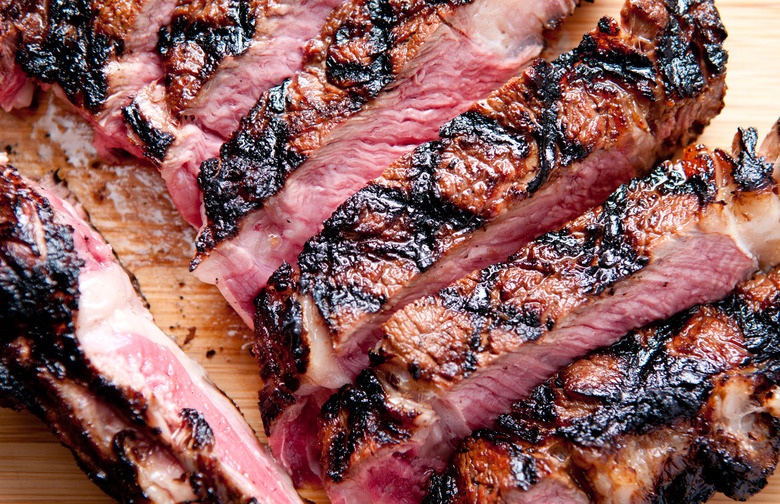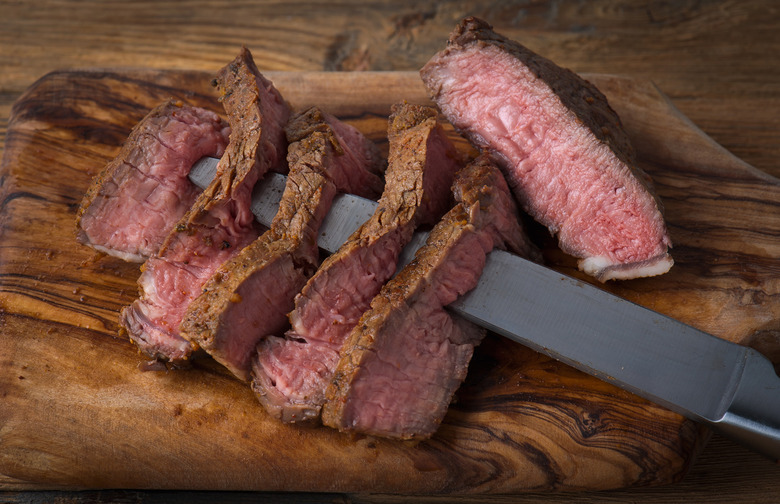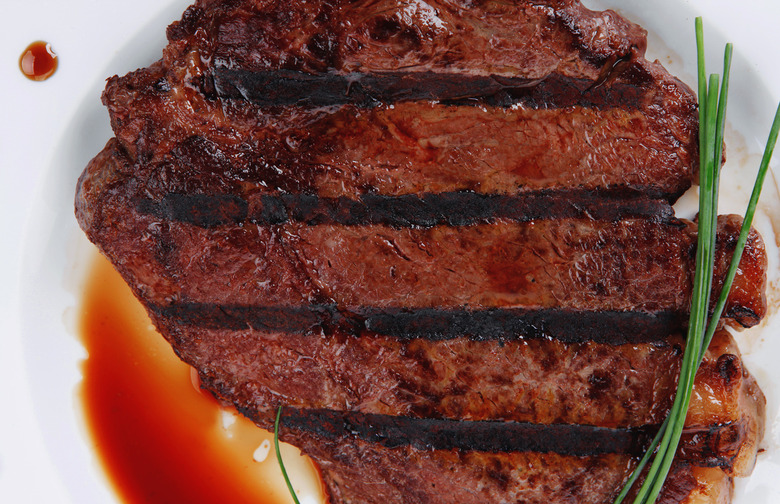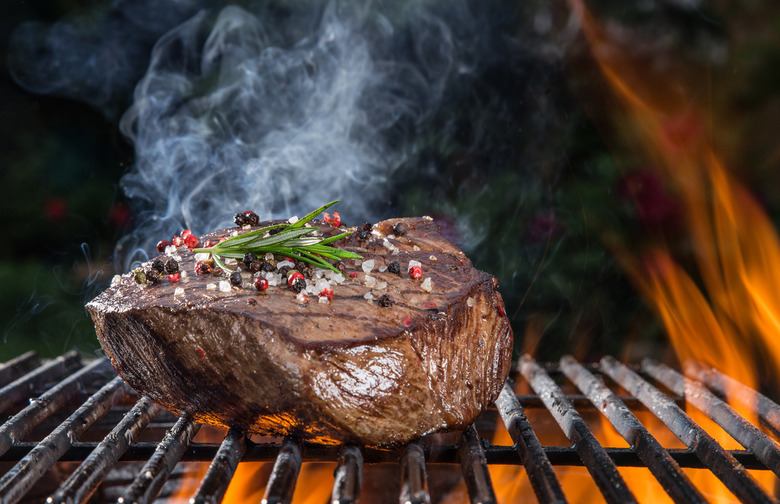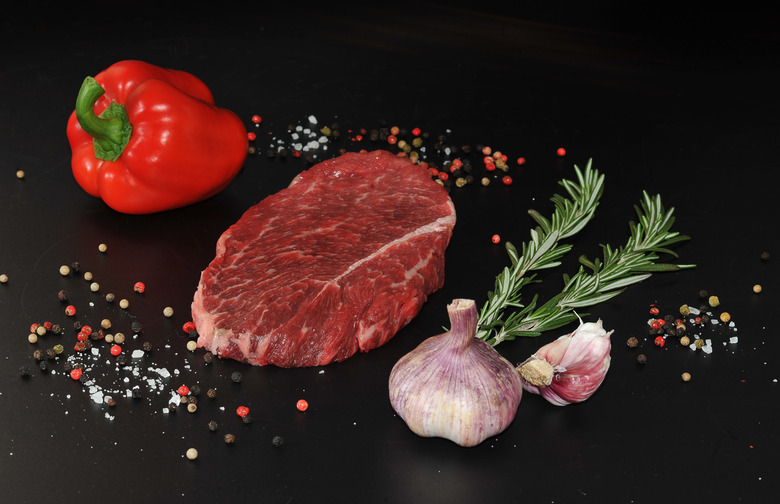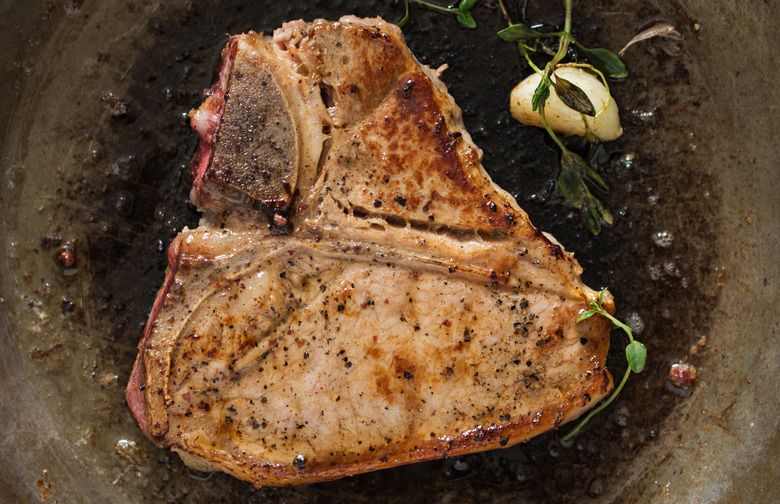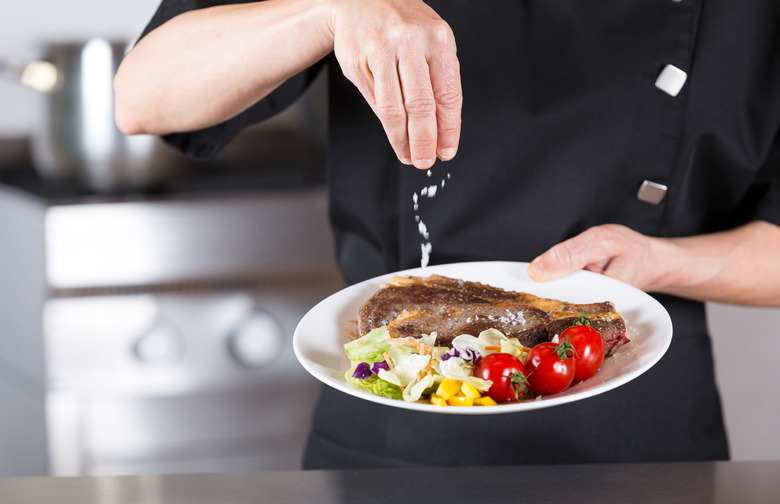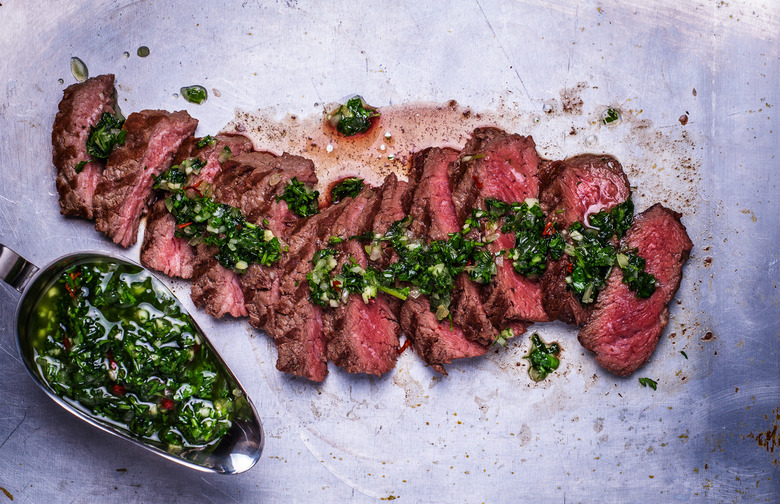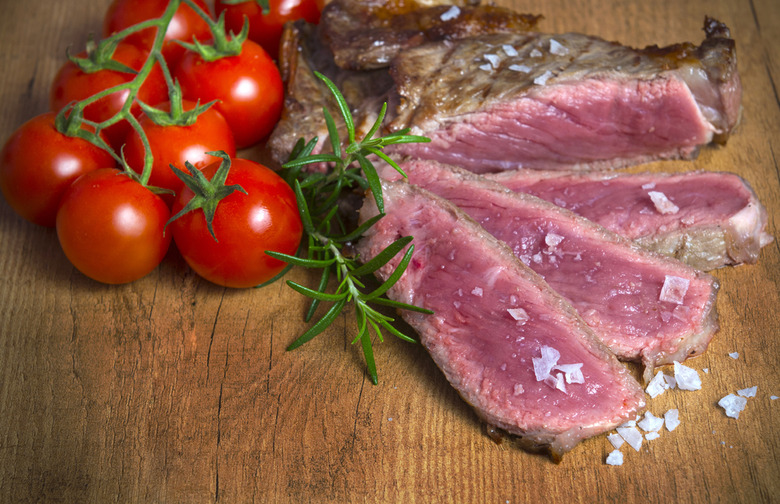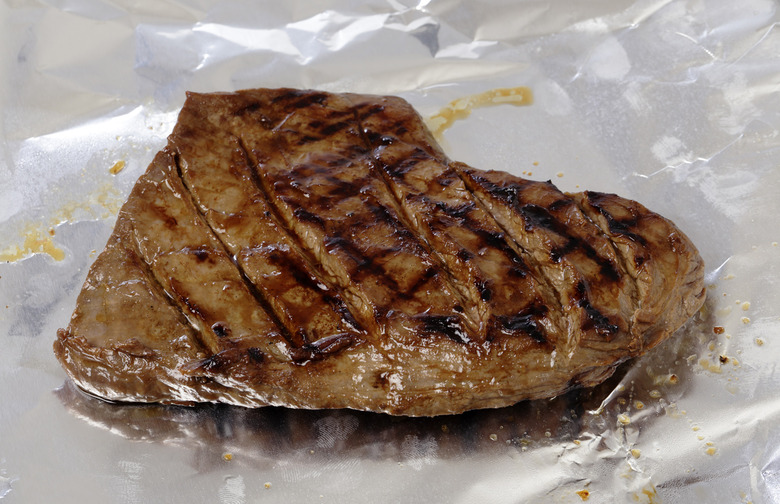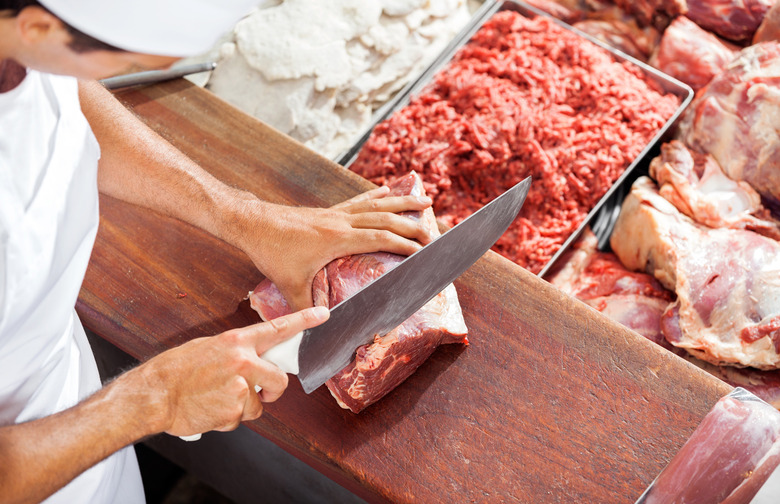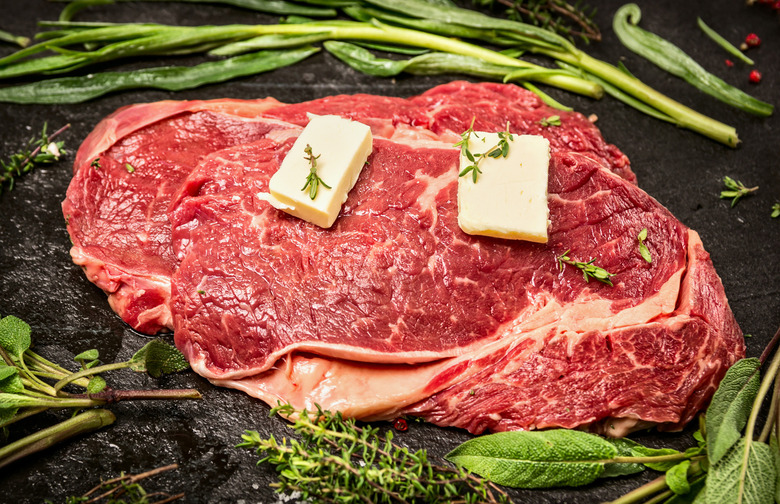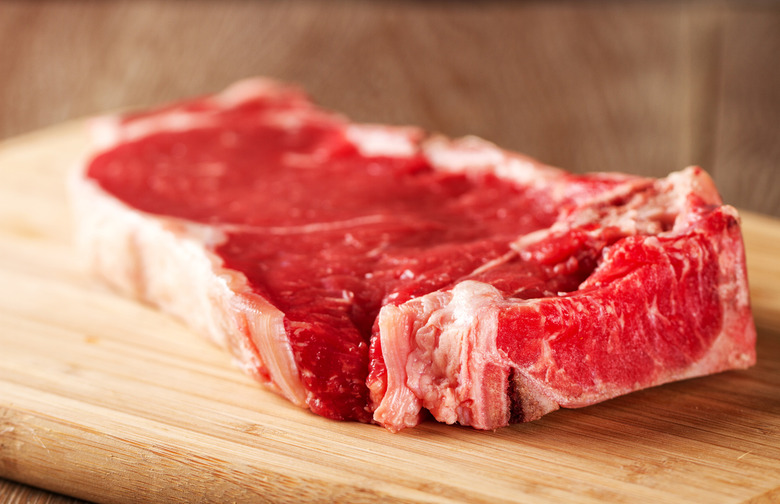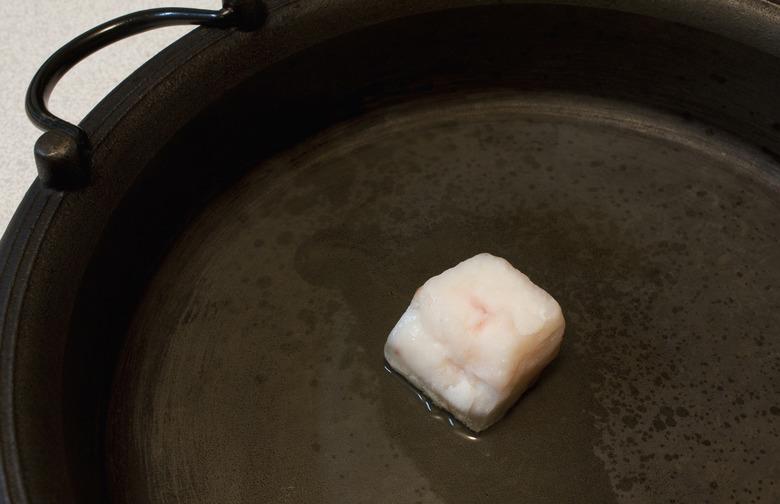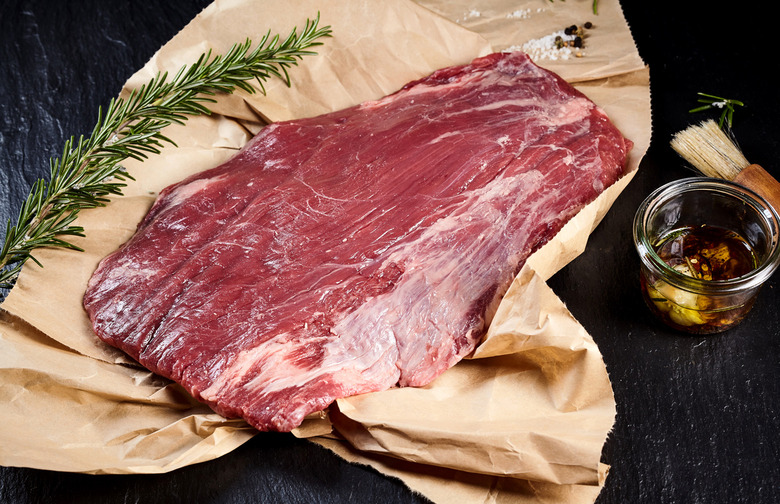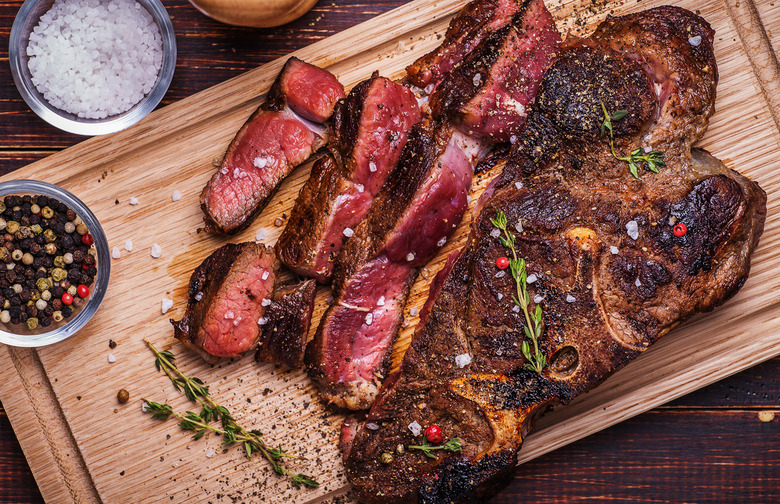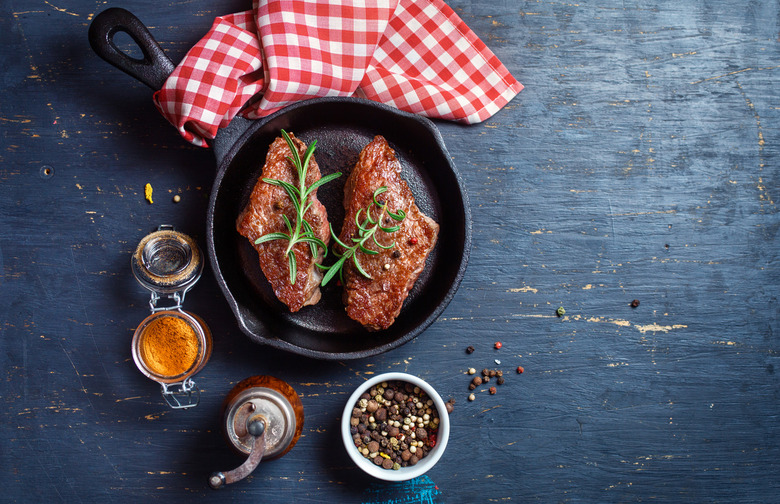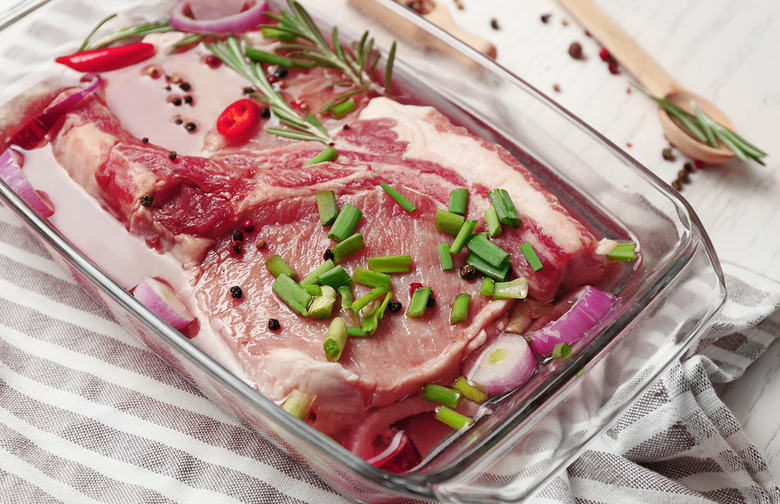How To Cook Steak Perfectly Every Time: Kitchen Secrets From 17 Chefs
We may receive a commission on purchases made from links.
Wonder why your steak at home never tastes as good as that porterhouse from your favorite steakhouse? We've rounded up tips from some of the best culinary minds in the country to bring you expert tips, so you can have that restaurant-quality experience in your own home.
Cooking a steak might seem like a simple task: Heat the grill, sprinkle some salt, and pray you don't overcook it, but there are actual tricks that can make this process less of a guessing game and more of a science (or art). We asked culinary experts to weigh in with their favorite tips and tricks, which range from what cuts to buy to how to slice your meat.
Colman Andrews, The Daily Meal
Even The Daily Meal's own Editorial Director and Six-time James Beard Award winner, Colman Andrews, weighed in on the best way to cook a steak:
Preheat the oven to 350 degrees F.
Melt 2 tablespoons of butter in a cast-iron pan over high. Season a 2- to 2 1/2-inch-thick boneless 1-pound ribeye generously on both sides with salt and pepper. Sear it on both sides for 2 minutes per side to develop a brown crust, then transfer it to a dry pan and put it into the oven for 18 to 20 minutes (depending on thickness) for rare.
Remove it from the oven and allow it to rest for 2 to 3 minutes, then slice it on the bias and serve.
Which brings us to some consistent advice for cooking the perfect steak that seems to come up over and over: First, whether cooking in a pan or on the grill, preheating is essential for a good sear, and second, always rest your meat before slicing.
To find out what cuts of steak are best, how long and at what temperature to cook your meat, and more from celebrity chefs, James Beard Award winners, and test kitchen experts, click through our slideshow of kitchen secrets from 17 chefs.
Chef/Owner Sean Brasel, Meat Market
Secret: The Hot Sear
Chef Sean Brasel is no stranger to grilling meat as owner/chef of contemporary American steakhouse, Meat Market, in Miami. He has become one of the city's most celebrated culinary minds. For the perfect steak, chef Brasel suggests:
If you hot-sear your steaks and put a great grill mark on them, then rest them at room temp for 20 minutes then re-grill them, you get that perfect crust. If it's a thin steak, the best result will come from caramelization (any sugars in the marinade will help with that crust) and super-hot sear to achieve the most moisture.
Chef Lauro Romero, Three Degrees Restaurant
Secret: Oil the Grill
Chef Lauro Romero, chef de cuisine at Three Degrees Restaurant in Portland, Oregon, serves dry-aged steaks grilled over smoky, wood fires in his restaurant, but has these tips for home cooks to ensure their grilled steaks turn out juicy and with a nice sear:
Brush the grill with olive oil first, and almost always, the meat too, which ensures [the steak] doesn't stick and gets a nice sear.
Executive Chef Julia Doyne, The Forge
Secret: Season Well and Let the Grill Do the Cooking
The legendary restaurant, The Forge, is known for its star-studded dining room in Miami that has been serving happy diners since the 1920s. Today, at the helm is its first female chef, Julia Doyne, and The Forge continues to be known for its excellent food. Chef Doyne warns home cooks of two common mistakes made when grilling and how to avoid them:
There are two huge mistakes people make when cooking steaks. The first is under-seasoning. Don't be afraid to put a nice layer of salt and fresh-ground black pepper on it before you start cooking! Once it's cooked and sliced, finish it up with a pinch of fleur de sel. Also, let the grill or cooking device do all the work. It's very tempting to keep moving it around, and flipping it back and forth; however you must resist! You will get a more even cook and a better sear or char if you just leave it to do its thing.
Chef Robert Phalen, One Eared Stag
Secret: Baste With Butter
When Chef Robert Phalen opened One Eared Stag in Atlanta, he dedicated himself to cooking with fresh ingredients in an innovative way, which is why it is no surprise that chef Phalen's advice bucks tradition, suggesting a different way to sear steaks that promises to create a thick, flavorful crust:
Use a super-hot surface and move the beef constantly so that it doesn't cook too much in one place, while simultaneously basting it in butter. Cook the steak super rare, then remove it from heat and let it rest for a few minutes to relax the mussel tissues. Repeat this process to desired doneness — this process is better than sous vide.
Chefs at Maverick Housewares
Secret: Use Finishing Salts
Maverick Housewares, which produces high-quality kitchen products including electronic barbecue grills and digital meat thermometer, has a staff of culinary experts to test and consult on products, which is why we asked these test kitchen chefs to dish on their favorite tricks for preparing the perfect steak, and here is what they had to say:
"Finishing" salts, such as fleur de sel or gris (grey) salt from France, or flaky Maldon salt from England, greatly enhance flavor and enjoyment of any meat. Just before serving, lightly sprinkle the meat surface with crunchy sea salt.
Chef Amanda Freitag, Food Network Host/Cookbook Author
Secret: Compound Butters
You may recognize Amanda Freitag from her time on Food Network's Chopped, American Diner Revival, or Iron Chef America where her culinary skills were put to the test against fellow competitor Bobby Flay. Freitag's culinary prowess is spelled out in her recent cookbook The Chef Next Door: A Pro Chefs Recipes for Fun, Fearless Home Cooking, where she shares a few of her own secrets for how to add flavor to your home cooked steak:
Herb butters are just a version of compound butter and are a fantastically simple way to add fancy style and extra flavor to a variety of grilled dishes.
Pitmaster Melissa Cookston, Memphis BBQ Co.
Secret: Thinner Steaks are Best Cooked Medium-Rare
As the only woman to be named barbecue world champion, pitmaster Melissa Cookston knows a thing or two about cooking a steak. In her cookbook, Smokin' Hot in the South: New Grilling Recipes from the Winningest Woman in BBQ, out May 10 Cookston says:
When grilling, there are some fairly simple temperature guidelines to give you an idea of doneness. Steak follows a simple progression from rare to well-done. Hanger steak, like flanks or skirt steak, benefits from a medium-rare to medium temperature.
Chef Joe Palma, Bourbon Steak
Secret: Slice Against the Grain
Chef Joe Palma who works with chef Michael Mina at Bourbon Steak in Washington, D.C., shares how important slicing the meat is to the texture of the finished steak:
You should cut the steak against the grain (not with it) to shorten the muscle fibers and make the meat less chewy.
Chef Rodney Murillo, Davio’s Northern Italian Steakhouse
Secret: Cover Steak With Foil
According to chef Rodney Murillo, Culinary Director at high-end steakhouse restaurant group, Davio's Northern Italian Steakhouse, what you do after the steak comes off the fire is just as important as the actual grilling process:
Transfer the meat to a cutting board and cover with foil. Let the steak rest 10 minutes before slicing thinly against the grain.
Executive Chef Dustin Ward, BLT Prime
Secret: Buy Your Steak From a Butcher
Executive Chef Dustin Ward, of BLT Prime in Miami, notes the importance of buying your meat from a trusted source. Starting with quality ingredients is the key to ending up with a delicious final product. Chef Ward says:
When possible, try to get your meat from a butcher — [it] will always be worth the extra effort — better cuts, better quality.
Chef Nick Morfogen, 32 East
Secret: A Butter Bath
Executive Chef Nick Morfogen, named by Food & Wine Magazine as one of the Top New Chefs in 1996, uses a rich, herbaceous, pungent bath of butter halfway through cooking his steak in a hot cast-iron skillet to add flavor. Chef Morfogen says:
Halfway through cooking the steak, dip in a bath of melted butter, Worcestershire sauce, tarragon, and garlic. Place back on grill or in skillet to finish.
Chef John Courtney, Carson Kitchen in Las Vegas
Secret: Start With Room Temperature Meat
To prevent your meat from overcooking, burning on the outside, or unevenly cooking, chef John Courtney, Culinary Director at Carson Kitchen in Las Vegas, suggests starting with meat at room temperature:
When grilling a steak, don't put it on the grill ice cold straight from the freezer — make sure it has a chance to temper. Season the meat well and make sure the grill is extremely hot. Once it's on the grill, leave it alone! No need to move the steak around excessively. Mark it evenly on both sides until it reaches the desired temperature.
Chef Marc Forgione, American Cut
Secret: Season With Fat
Chef Marc Forgione, winner of season three of Food Network's The Next Iron Chef competitive cooking show and restaurateur, knows a thing or two about cooking the perfect steak. Chef Forgione uses rendered beef fat infused with herbs to add flavor to his steaks:
All animals should be cooked and seasoned with their own fat. When we cook steak, we use our MOP which is dry-aged beef fat that's been rendered and cooked with butter, thyme, rosemary, and garlic.
Chef Silvia Baldini, Strawberry and Sage
Secret: Finding the Right Cut
Chef/owner of Strawberry and Sage in Connecticut, chef Silvia Baldini also competed on and won Food Network's Chopped. Chef Baldini shares with us her favorite steak, the flap steak, and how to prepare this underrated cut of steak:
If I want flavor and texture, one cut is firmly lodged in my mind and that's undeniably flap steak [Bavette]... My marinade of choice for Bavette is a whiskey, honey, coffee, and garlic marinade. Salty and slightly bitter from the espresso powder but with a hint of sweetness from the honey, it enhances the already powerful flavor of the — if cooked right — charred-but-tender meat.
I like to serve the steak, medium-rare, sliced, with a caramelized onion marmalade I have learned to make at Ritz in London that I adore for its sweetness and silky texture and a simple but bright and slightly vinegary salsa verde. Nothing else.
Chef Freida Hirsch, HelloFresh
Secret: Dry the Meat for a Good Sear
As a chef for the successful meal kit delivery service, HelloFresh, Chef Freida Hirsch is tasked with relating the most sophisticated cooking techniques for the home cook:
Everyone should know how to properly sear a piece of meat like steak. The trick is to pat the meat dry with paper towels before seasoning it with a generous amount of salt and pepper. Then, you should heat neutral oil in a pan over medium-high heat until it's very, very hot. The oil should shimmer in the pan when tilted. Add the meat to the pan and don't touch until you're ready to flip. Cook around just 2 to 3 minutes on each side, until it's browned on the outside, but not completely cooked. From there, transfer the steak to a baking sheet in the oven (heated to 425 degrees F) to finish it off for about 5 to 7 minutes.
Chef Jason Wilson, Miller’s Guild
Secret: Keep It Simple
Chef Jason Wilson, a James Beard Award-winning chef and owner of Miller's Guild in Seattle, shares with us how he keeps it unfussy using basic seasoning and tools to create the perfect steak:
Season steak with large sea salt and cracked pepper. Rest at room temp for 30 minutes. Use a cast iron pan on medium high, 2 minutes on either side for 14 minutes total, flipping 6 times, remove and allow 5 minutes at room temp to rest. Slice and eat.
Chef Matt King, Smith & Wollensky
Secret: Take Your Time
According to chef Matt King, the National Director of Culinary Development and Corporate Executive Chef for Smith & Wollensky, one of America's most famous high-end steakhouse chain restaurants, planning ahead is key to getting the most out of your marinade:
When marinating steaks, the length of time is important. It will take two days for the full benefit of marinating to take effect, so plan ahead and allow time for the process. When grilling marinated steaks, keep in mind that the more sugar the marinade contains, the faster it will char, so you will need to turn and reduce heat earlier. Note that it will look cooked on the outside far before it cooks on the inside. When using marinades that are oil-based, make sure you allow the steak to drain off the oil before it hits the grill.
